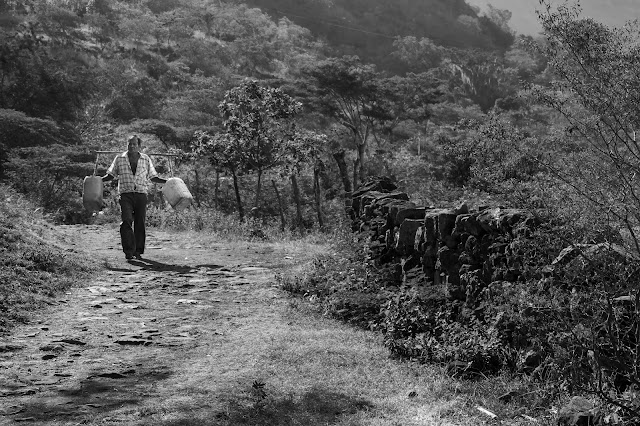I am going to close this three-posts collection of
photographs talking about Guane, a small village, ten kilometers (7
miles) north of Barichara, named by the indigenous Guane people (see next).
One
interesting thing is that you can reach Guane from Barichara following the
spectacular ancient stone paved path, called Camino Real.
It was built by
Guanes and rebuilt continuously over the centuries.
Many locals and tourists
follow this path instead of reaching Guane by car, following the more anonymous
paved road.
Camino
Real is a lovely 2-3 hours trail that zigzags through woods and meadows, with nice views
on the countryside.
The landscape and the vegetation are great, and the blue
sky gives the final touch, as you can see from these images.
The Camino Real crosses a rural region, rich of farms, farmers and livestock. So, images like these are very common along the trail.

Although the colors are very important in this region, even from the photographic point of view, I found it interesting to experiment with some monochromatic expressions of this path.
I believe the result is good, but judge for yourself.
The word guane means “tree” or “lower part of a leaf” in the Chibcha language, originally spoken by the Guane people.
Guanes were in this area well before the Spanish conquest.
The well-known
mantles made by them from cotton have been dated back to the 11th century AD.
The Guanes
lived north of the Chicamocha River, around the Chicamocha Canyon in an area
probably stretching from Vélez in the south to the capital of Santander,
Bucaramanga, in the north.
However, some sources state their territory did not
extend so far north.
Guane, a corregimiento of Barichara,
Santander, is said to have been the capital of the Guane people.
I captured this picture (right) arriving to the village from Camino Real.
Guane is a
pretty and picturesque village. It is less touristy than Barichara, but not
less appealing. It is quieter and less crowded with the same colonial streets
and architecture.
Millions of years ago, this land was
covered by sea. This is why walking through the streets of Guane you can still
find image like this: marine fossils from a remote and very different time.
Many of them are preserved in the Archaeological and Paleontological Museum of this town.
I would like to close this brief exploration of Guane with another three images in black and white.
As always, monochrome is a more abstract description. I like it because allows observers to focus more on objects, shapes, perspective and people.
Again, judge for yourself!
This is the last post about this area of the Colombian Department of Santander.
I hope you did enjoy pictures and descriptions.
Thank you for visiting!!
Come back again soon for the next post.
Come back again soon for the next post.
















Hermoso post de mi tierra y magníficas fotografías! Espero más entradas sobre Colombia en el futuro.
ReplyDelete